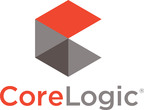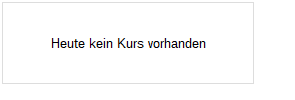
CoreLogic Reports Home Equity Increased $726 billion in the Third Quarter Compared With a Year Ago
PR Newswire
IRVINE, Calif., Dec. 8, 2016
IRVINE, Calif., Dec. 8, 2016 /PRNewswire/ -- CoreLogic® (NYSE: CLGX), a leading global property information, analytics and data-enabled solutions provider, today released a new analysis showing that U.S. homeowners with mortgages (roughly 63 percent of all homeowners) saw their equity increase by a total of $227 billion in Q3 2016 compared with the previous quarter, an increase of 3.1 percent. Additionally, 384,000 borrowers moved out of negative equity, increasing the percentage of homes with positive equity to 93.7 percent of all mortgaged properties, or approximately 47.9 million homes. Year over year, home equity grew by $726 billion, representing an increase of 10.8 percent in Q3 2016 compared with Q3 2015.
Experience the interactive Multimedia News Release here: http://www.multivu.com/players/English/71280580-corelogic-q3-2016-home-equity-report
In Q3 2016, the total number of mortgaged residential properties with negative equity stood at 3.2 million, or 6.3 percent of all homes with a mortgage. This is a decrease of 10.7 percent quarter over quarter from 3.6 million homes, or 7.1 percent of mortgaged properties, in Q2 2016 and a decrease of 24.1 percent year over year from 4.2 million homes, or 8.4 percent of mortgaged properties, in Q3 2015.
Negative equity, often referred to as "underwater" or "upside down," applies to borrowers who owe more on their mortgages than their homes are worth. Negative equity can occur because of a decline in home value, an increase in mortgage debt or a combination of both.
Negative equity peaked at 26 percent of mortgaged residential properties in Q4 2009, based on CoreLogic negative equity data, which goes back to Q3 2009.
The national aggregate value of negative equity was about $282 billion at the end of Q3 2016, decreasing approximately $2.1 billion, or 0.8 percent, from $284 billion in Q2 2016, and decreasing year over year about $25 billion, or 8.2 percent, from nearly $307 billion in Q3 2015.
"Home equity rose by $12,500 for the average homeowner over the last four quarters," said Dr. Frank Nothaft, chief economist for CoreLogic. "There was wide geographic variation with homeowners in California, Oregon and Washington gaining an average of at least $25,000 in home equity wealth, while owners in Alaska, North Dakota and Connecticut had small declines, on average."
"Price appreciation is the main ingredient for home equity wealth creation, and home prices rose 5.8 percent in the year ending September 2016 according to the CoreLogic Home Price Index," said Anand Nallathambi, president and CEO of CoreLogic. "Paydown of principal is the second key component of equity building. Many homeowners have refinanced into shorter-term loans, such as a 15-year loan, and by doing so, they have significantly fewer mortgage payments and are able to build equity wealth faster."
Highlights as of Q3 2016:
- Texas had the highest percentage of homes with positive equity at 98.4 percent, followed by Alaska (98.1 percent), Colorado (97.9 percent), Utah (97.9 percent) and Washington (97.9 percent).
- On average, homeowner equity increased about $13,000, from Q3 2015 to Q3 2016 (for mortgaged properties). California, Oregon and Washington had increases of $25,000 to $30,000, while Alaska, Connecticut, and North Dakota experienced small declines.
- Nevada had the highest percentage of mortgaged properties in negative equity at 14.2 percent, followed by Florida (12.5 percent), Illinois (10.6 percent), Arizona (10.6 percent) and Rhode Island (10 percent). These top five states combined accounted for 30.6 percent of negative equity mortgages in the U.S., but only 16.3 percent of outstanding mortgages.
- Of the 10 largest metropolitan areas by population, San Francisco-Redwood City-South San Francisco, CA had the highest percentage of mortgaged properties in a positive equity position at 99.4 percent, followed by Houston-The Woodlands-Sugar Land, TX (98.5 percent), Denver-Aurora-Lakewood, CO (98.4 percent), Los Angeles-Long Beach-Glendale, CA (96.9 percent) and Boston, MA (95.3 percent).
- Of the same 10 largest metropolitan areas, Miami-Miami Beach-Kendall, FL had the highest percentage of mortgaged properties in negative equity at 17 percent, followed by Las Vegas-Henderson-Paradise, NV (16.2 percent), Chicago-Naperville-Arlington Heights, IL (12.2 percent), Washington-Arlington-Alexandria, DC-VA-MD-WV (8.7 percent) and New York-Jersey City-White Plains, NY-NJ (5.1 percent).
- The bulk of home equity for mortgaged properties is concentrated at the high end of the housing market. For example, 96 percent of homes valued at greater than $200,000 have equity compared with 90 percent of homes valued at less than $200,000.
*Q2 2016 data was revised. Revisions with public records data are standard, and to ensure accuracy, CoreLogic incorporates the newly released public data to provide updated results.
Figure 1: National Home Equity Distribution by LTV Segment
Figure 2: Home Equity Share by State and Equity Cohorts
Figure 3: Near and Negative Equity Share by State
Figure 4: Map of Average Year-Over-Year Equity Gain per Borrower
State Table: CoreLogic Q3 2016 Negative Equity by State*
*This data only includes properties with a mortgage. Non-mortgaged properties are by definition not included.
For ongoing housing trends and data, visit the CoreLogic Insights Blog: http://www.corelogic.com/blog.
Methodology
The amount of equity for each property is determined by comparing the estimated current value of the property against the mortgage debt outstanding (MDO). If the MDO is greater than the estimated value, then the property is determined to be in a negative equity position. If the estimated value is greater than the MDO, then the property is determined to be in a positive equity position. The data is first generated at the property level and aggregated to higher levels of geography. CoreLogic data includes more than 50 million properties with a mortgage, which accounts for more than 95 percent of all mortgages in the U.S. CoreLogic uses public record data as the source of the MDO, which includes both first-mortgage liens and second liens, and is adjusted for amortization and home equity utilization in order to capture the true level of MDO for each property. The calculations are not based on sampling, but rather on the full data set to avoid potential adverse selection due to sampling. The current value of the property is estimated using a suite of proprietary CoreLogic valuation techniques, including valuation models and the CoreLogic Home Price Index (HPI). In August 2016, the CoreLogic HPI was enhanced to include nearly one million additional repeat sales records from proprietary data sources that provide greater coverage in home price changes nationwide. The increased coverage is particularly useful in 14 non-disclosure states. Additionally, a new modeling methodology has been added to the HPI to weight outlier pairs, ensuring increased consistency and reducing month-over-month revisions. The use of the enhanced CoreLogic HPI was implemented with the Q2 2016 Equity report. Only data for mortgaged residential properties that have a current estimated value are included. There are several states or jurisdictions where the public record, current value or mortgage data coverage is thin and have been excluded from the analysis. These instances account for fewer than 5 percent of the total U.S. population.
Source: CoreLogic
The data provided is for use only by the primary recipient or the primary recipient's publication or broadcast. This data may not be re-sold, republished or licensed to any other source, including publications and sources owned by the primary recipient's parent company without prior written permission from CoreLogic. Any CoreLogic data used for publication or broadcast, in whole or in part, must be sourced as coming from CoreLogic, a data and analytics company. For use with broadcast or web content, the citation must directly accompany first reference of the data. If the data is illustrated with maps, charts, graphs or other visual elements, the CoreLogic logo must be included on screen or web site. For questions, analysis or interpretation of the data contact Lori Guyton at lguyton@cvic.com or Bill Campbell at bill@campbelllewis.com. Data provided may not be modified without the prior written permission of CoreLogic. Do not use the data in any unlawful manner. This data is compiled from public records, contributory databases and proprietary analytics, and its accuracy depends upon these sources.
About CoreLogic
CoreLogic (NYSE: CLGX) is a leading global property information, analytics and data-enabled solutions provider. The company's combined data from public, contributory and proprietary sources includes over 4.5 billion records spanning more than 50 years, providing detailed coverage of property, mortgages and other encumbrances, consumer credit, tenancy, location, hazard risk and related performance information. The markets CoreLogic serves include real estate and mortgage finance, insurance, capital markets, and the public sector. CoreLogic delivers value to clients through unique data, analytics, workflow technology, advisory and managed services. Clients rely on CoreLogic to help identify and manage growth opportunities, improve performance and mitigate risk. Headquartered in Irvine, Calif., CoreLogic operates in North America, Western Europe and Asia Pacific. For more information, please visit www.corelogic.com.
CORELOGIC and the CoreLogic logo are trademarks of CoreLogic, Inc. and/or its subsidiaries.

To view the original version on PR Newswire, visit:http://www.prnewswire.com/news-releases/corelogic-reports-home-equity-increased-726-billion-in-the-third-quarter-compared-with-a-year-ago-300374897.html
SOURCE CoreLogic

Mehr Nachrichten zur CoreLogic, Inc Aktie kostenlos abonnieren
(Mit der Bestellung akzeptierst du die Datenschutzhinweise)

Hinweis: ARIVA.DE veröffentlicht in dieser Rubrik Analysen, Kolumnen und Nachrichten aus verschiedenen Quellen. Die ARIVA.DE AG ist nicht verantwortlich für Inhalte, die erkennbar von Dritten in den „News“-Bereich dieser Webseite eingestellt worden sind, und macht sich diese nicht zu Eigen. Diese Inhalte sind insbesondere durch eine entsprechende „von“-Kennzeichnung unterhalb der Artikelüberschrift und/oder durch den Link „Um den vollständigen Artikel zu lesen, klicken Sie bitte hier.“ erkennbar; verantwortlich für diese Inhalte ist allein der genannte Dritte.




